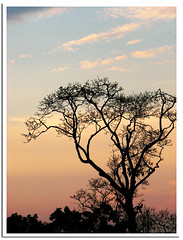I have written my second article at IdeasMakeMarket.com on customer service.
Please do read it and post your comments.
http://www.ideasmakemarket.
Musings on Marketing,Human Behavior,Finance,Advertising and Whatever Comes to My Mind
 There are photographers who love to use the flash creatively and then there are these hard core ambient natural light lovers who use minimal flash that too if absolutely necessary. Since most consumer cameras come with smaller sensors, the ability to get quality pictures during night time without flash is less. Most small consumer cameras have a harsh flash which makes the photo look very artificial. Hence daylight would be the best time to try experimenting particularly with outdoor photography. In fact the best time would be early in the morning (7 am – 9:30-10 am) before the sun builds up that sweat on your forehead. It’s less about the sweat and more about the fact that light coming from the sun would not be harsh at that point of time. It would be bright enough to light up your subjects optimally. 3pm to 5pm would also be ideal for the same reason. Between 5: 30pm and 7pm, you will find quick changes happening in the skyline. Just before sunset you will see hues of blue and warm yellow tones getting changed to light and then dark orange. It’s a treat for your eyes and the best time to get Silhouette’s as shown in the picture here.
There are photographers who love to use the flash creatively and then there are these hard core ambient natural light lovers who use minimal flash that too if absolutely necessary. Since most consumer cameras come with smaller sensors, the ability to get quality pictures during night time without flash is less. Most small consumer cameras have a harsh flash which makes the photo look very artificial. Hence daylight would be the best time to try experimenting particularly with outdoor photography. In fact the best time would be early in the morning (7 am – 9:30-10 am) before the sun builds up that sweat on your forehead. It’s less about the sweat and more about the fact that light coming from the sun would not be harsh at that point of time. It would be bright enough to light up your subjects optimally. 3pm to 5pm would also be ideal for the same reason. Between 5: 30pm and 7pm, you will find quick changes happening in the skyline. Just before sunset you will see hues of blue and warm yellow tones getting changed to light and then dark orange. It’s a treat for your eyes and the best time to get Silhouette’s as shown in the picture here. In this photo to the left, you can see concept of rule of thirds being implemented.Since the focus/primary subject is the sea with the boat and fishing nets, these should occupy 2/3rds of your frame.
In this photo to the left, you can see concept of rule of thirds being implemented.Since the focus/primary subject is the sea with the boat and fishing nets, these should occupy 2/3rds of your frame.
 Often times, we come across people who toe a standard line and expect others to toe that same line without having any buy-in from the team. To top that, they seldom do what they have been espousing. When this happens, people around who are observing you, be it co-workers/ supervisors, would loose all credibility and trust in you. It’s not necessary that you have to do something nefarious to loose credibility. Here is a small example: Imagine a team leader or a supervisor admonishing subordinates for coming late to work or to a meeting. Now, if the team leader/supervisor himself is a habitual late comer, then what is the message being conveyed to subordinates. He has already lost his credibility in the eyes of his subordinates. The negative impact that one faces on lost credibility, far outweigh any laurels received from outstanding achievements at work.
Often times, we come across people who toe a standard line and expect others to toe that same line without having any buy-in from the team. To top that, they seldom do what they have been espousing. When this happens, people around who are observing you, be it co-workers/ supervisors, would loose all credibility and trust in you. It’s not necessary that you have to do something nefarious to loose credibility. Here is a small example: Imagine a team leader or a supervisor admonishing subordinates for coming late to work or to a meeting. Now, if the team leader/supervisor himself is a habitual late comer, then what is the message being conveyed to subordinates. He has already lost his credibility in the eyes of his subordinates. The negative impact that one faces on lost credibility, far outweigh any laurels received from outstanding achievements at work.